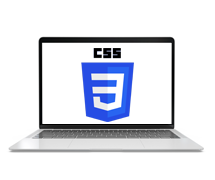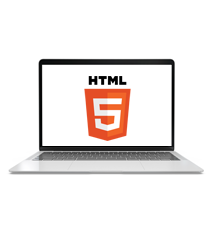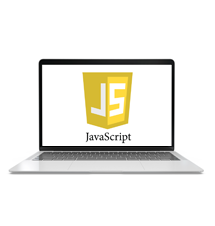What’s the Difference Between Front-end, Back-end, and Full Stack, Development?
As of June 2021, the total number of websites on the internet is 1.8 billion. And as a job responsibility, the people responsible for analyzing, coding, building, and maintaining those websites are web developers. Let’s find out Front-End vs Back-End vs Full-Stack development.
To survive this competitive market, website development has become a critical part of businesses. But are you aware of the different types of web development that one can seek or learn? If you’ve researched on the same you would know that this discipline is broken down into 3 concentrations: Front-end, Back-end, and Full-stack development. One has to hire full-stack developers to develop complex websites that full-functional.
To help our readers know the difference between the three, we’ve decided to write this read. It brings you the subtle or known difference between Front-end, Back-end, and Full-stack development.
What is a Front-End Development?
As per the JavaScript development company, it is the part of your website that a user can interact with. Everything that you observe when you browse different websites on the internet, from colors and fonts to dropdowns and sliders, is made through the efficient combination of CSS, HTML, and JavaScript.

CSS

HTML

JavaScript
What is a Back-End Development?
The back-end of a website is also known as its server-side. It consists of 3 primary things i.e. server that provides data on request, an application that channels it, and a database that stores and organizes this information.
For instance, when one is searching for a shirt on a website they interact with its front-end. Once they add an item to their cart and follow the check-out process, the information is stored in their database that resides on the server. After a few days, if a client wants to check their delivery status, the server can fetch their desired information from the server and present it on the front-end.
What is Full-Stack Development?
Developing a front and back end for a website has become a niche. This requires extensive work and therefore it’s common for developers to master any one end. If you observe it as a general rule, one would learn that this isn’t a practical solution.
Yet, custom software development companies would at times hire MEAN stack developers who are proficient in both sides. These are the A-players of the game. They have expertise in the subject and can visualize a bigger picture. They can very well optimize the development process by predicting the hurdles that can cause functional problems.
Learning one of one these different segments lets focus on what a front-end vs back-end developer can contribute to a project.
Front-End vs Back-End Development
Front-End Development
It’s the front-end developer’s responsibility to create an intuitive user interface supported by an immersive user experience. To achieve this target a front-end developer must have optimum knowledge of three languages being HTML, CSS, and Javascript.
In addition to being efficient with the preceding languages, one must be familiar with frameworks like AngularJS, ReactJS, Bootstrap, and more. These techs make sure that your content looks pleasing on the eyes no matter what device you use to access it. One has to also be familiar with libraries such as LESS and jQuery that offer packages of code to save development time.
One of the ongoing trends observed with job listings is the requirement for experience with Ajax. It offers techniques with Javascript that loads pages dynamically downloading the server data in the background.
As a simpler analogy, a front-end developer has to perform interior designing for a house designed by a back-end developer. To do so they work with UI/UX designers and build wireframes and mockups to transform their imagination into reality.
Experienced developers can easily identify problems with user experience and provide suggestions to create a better and seamless design. One also has to follow the script that is being adhered to by other teams to achieve specific goals and needs. Offering what the client wants is of utmost importance.
Back-End Development
To make server, application, and database communicate with each other one has to use server-side languages. These include PHP, Python, .NET, Java, and Ruby. Along with this, you would need tools such as Oracle, MySQL, and a SQL server to find, change or present to the front-end as ordered by the customer.
Various companies demand experience with the top PHP frameworks like Laravel, CakePHP, and CodeIgnitor for job openings. Apart from this, one would require experience with version control software such as CVS, SVN, or Git.
It’s essential to feed clean, portable, and well-documented code into your web applications. Back-end developers use numerous other tools to do the same. But before they move forward with coding, they have to thoroughly understand what the stakeholders particularly want. It’s then that they can convert those needs into technical requirements and design the most efficient methods to map their business online.
Skills Required for Full-Stack Development
As per Technource, Full-stack developers are a cocktail of the above two. They possess high back-end knowledge and know the ins and outs of server-side programming. They’re familiar with front-end languages and understand how the content will look like from a user’s perspective. In a nutshell, they can be termed ‘jack-of-all-trades’.
Irrespective of the project or clients or tools, full-stack developers should have a brief idea about everything that works well with a web application. This includes setting up Linux servers, Javascript applications, configuring server-side APIs, and creating the designs with CSS. Apart from knowledge of these tools, they are expected to recognize the server and client-side solutions. And present the pros and cons of implementing those solutions.
Having learned a lot about what these domains require in terms of knowledge and experience, let’s understand the pros and cons of the same.
Pros & Cons of Front-End Development
Pros
Quick Development

Secure Environment

Responsive

Easy to Learn

Cons
Newer Tech

Code Inflation

Updates

Pros & Cons of Back-End Development
Pros
Compatible with Various Environments

Suitable for Quick Information Sharing

Needs Code Logic

Responsible for the User Experience

Adds Functionality to the Front-End

Cons
No Automation

Complex Programming

Learning Curve

Pros & Cons of Full-Stack Development
Pros
Multi-Tasking

Best Suitable for Small Projects

Quick Results

Cons
Time Management

Implement Current Trends

Wrapping Up
This is a wrap on this read. We hope our blog offered you some perspective on the subject. Being a MERN stack development company we have extensive experience working with numerous web development services.
Request Free Consultation
Amplify your business and take advantage of our expertise & experience to shape the future of your business.







